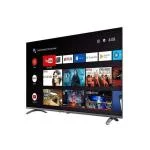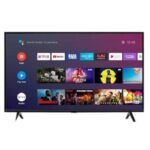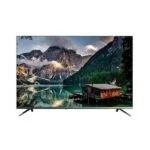50 watts complete solar full kit
KSh12,500
50 watts complete solar price is Ksh 12,500/= at Patabay Kenya.
Key Features
- 50w Solar panel
- 50AH Battery
- 150w inverter
- 10 Amp solar controller
Choose Product Options
Location and Contacts
- Delivery: Within 2 hours in Nairobi
- Pay Cash on Delivery: Countrywide
- Location: Norwhich Union, 4 Floor, Room no. 14, Opposite Hilton, Nairobi.
- Contacts: 0711 114 001
Why choose us?
- Pay Cash on delivery countrywide
- Free returns on defective items
- Genuine products with one year warranty.
- Pick up or delivery: All g4s offices countrywide
Description
50 watts complete solar
50 watts complete solar price is Ksh 12,500/= at Patabay Kenya.
Key Features
- 50w Solar panel
- 50AH Battery
- 150w inverter
- 10 Amp solar controller
What 50 watts complete solar can support
- Light bulbs up to 4bulbs(5w)
- Phone Charging
- Laptop charging
Please note:
The information written here is an estimate and depends on several factors. We won’t guarantee 100% accuracy on the number of items this solar kit can support; kindly consult experts widely to confirm.
Advantages of Solar
- low-emission
- Suitable for remote areas.
- Reduce Noise
- Green Energy.
- No monthly bills
- No KPLC blackouts
Disadvantages of Solar
- Expensive to set up
- Weather dependent
- It uses a lot of space
A complete 50 watts solar system is a great way to start harnessing the sun’s power and reducing your carbon footprint. But what exactly does it include?
Firstly, you’ll need a solar panel or a set of boards to generate up to 50 watts of power. These panels usually comprise photovoltaic cells that convert sunlight into electricity.
Next, you’ll need a charge controller, which regulates the amount of power from the solar panel and sends it to the battery bank for storage. This ensures that your batteries are not overcharged or damaged due to excess capacity.
Speaking of batteries, you will also need them to store the energy your solar panel generates during the day for use at night or on cloudy days when there’s less sunlight available. Deep cycle batteries such as lead-acid or lithium-ion batteries are typically used in most small-scale solar systems like this.
To complete your 50-watt solar system, you’ll need an inverter that converts DC (direct current) energy from your battery bank into AC (alternating current) energy usable by household appliances and devices.
In summary:
– Solar panel(s) capable of generating up to 50 watts
– Charge controller
– Deep cycle batteries
– Inverter
With these four essential components grouped, you should be able to assemble a functional and reliable 50-watt solar system for off-grid applications such as camping or powering small electronics in remote locations.
However, while this system is excellent for its purpose, it might need to catch up if you intend to run larger appliances like refrigerators or HVAC units. Consider investing in high-capacity panels and more significant battery banks for adequate coverage.
ULTIMATE GUIDE

Best seller products
FILTER PHONES BY BRAND
Tecno Samsung Xiaomi Infinix Oneplus Itel
Huawei Nokia Realme Oppo iPhone
TV'S Home Theater Woofers Soundbars Laptops Kids Tablets Solar
Fridges Showcase chiller Freezers Cookers Washing Machines Dispensers Microwaves
How to Buy from Patabay Kenya the Home of top Appliance
- Either select Buy now option or place your order through our WhatsApp or Call one of our representatives
- Delivery within Nairobi is 250, Delivery outside Nairobi is 400 countrywide.
- Order online and Get Ksh 200 Discount
Call Suleka : 0711 114 001
Why we are different?
- Risk free Pay Cash on delivery countrywide
- Free returns on defective items within 7 days
- Genuine products with warranty.
- Pick up or delivery: All g4s offices countrywide
50 watts complete solar full kit
Get Free Glass Protectors
KSh12,500
PAY AFTER DELIVERY COUNTR WIDE
Location: Norwhich Union, 4 Floor, Room no. 14, Opposite Hilton, Nairobi.
🚀 Black Friday Blowout at Patabay Kenya! 🚀 Unleash unbeatable savings on the latest electronics, with extraordinary wholesale deals when you buy more than one item! Don't miss out on our exclusive, once-a-year discounts – only at Patabay Kenya! 🎉📱💻 #BulkBonanza #BlackFridaySpecials












